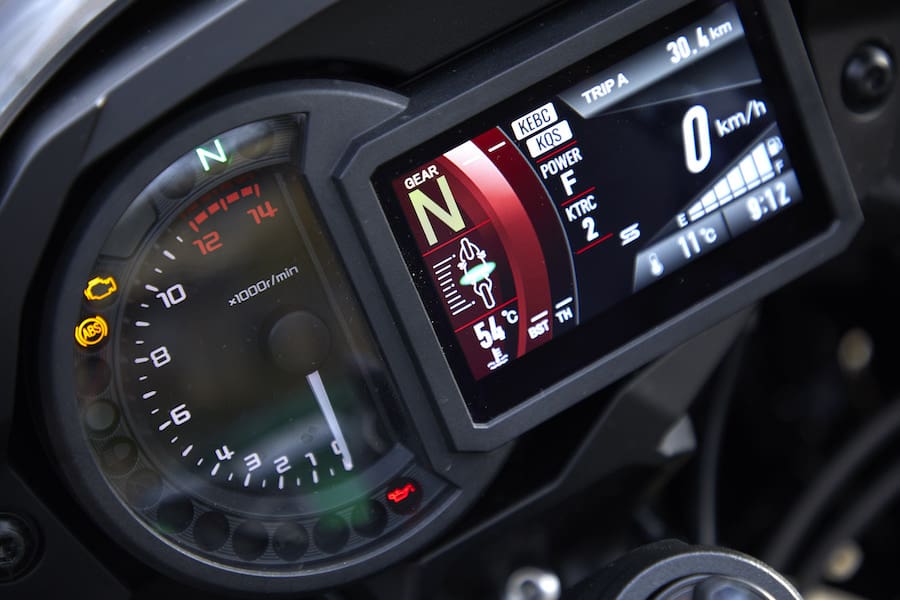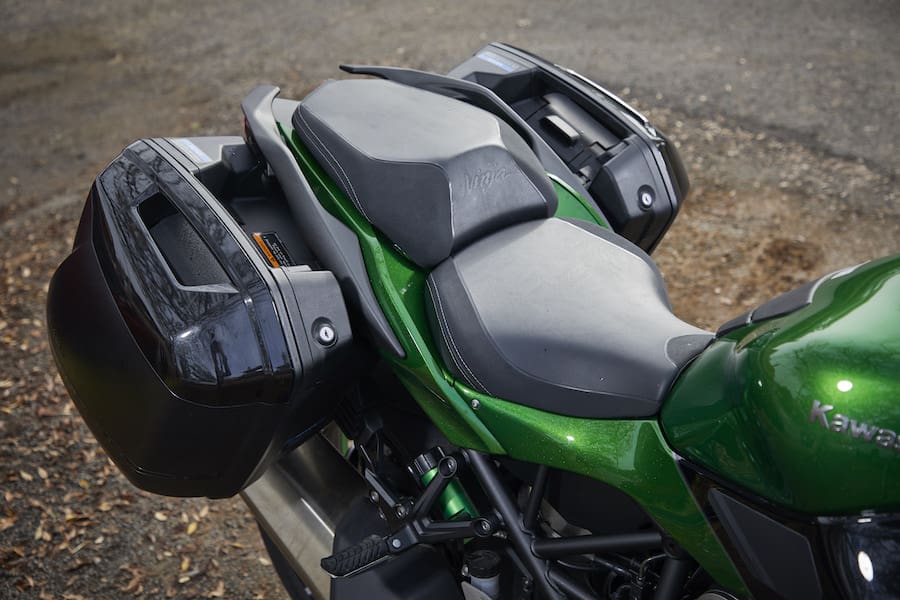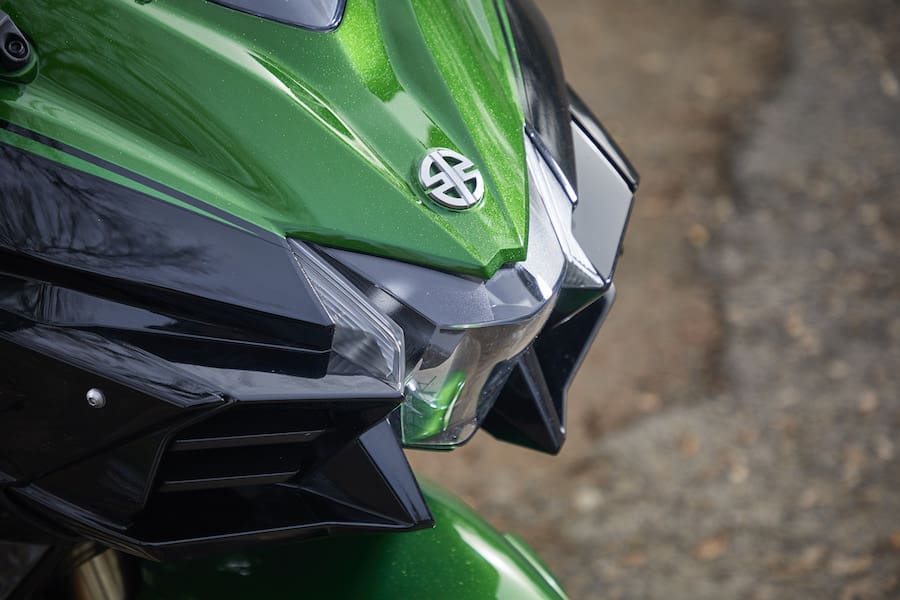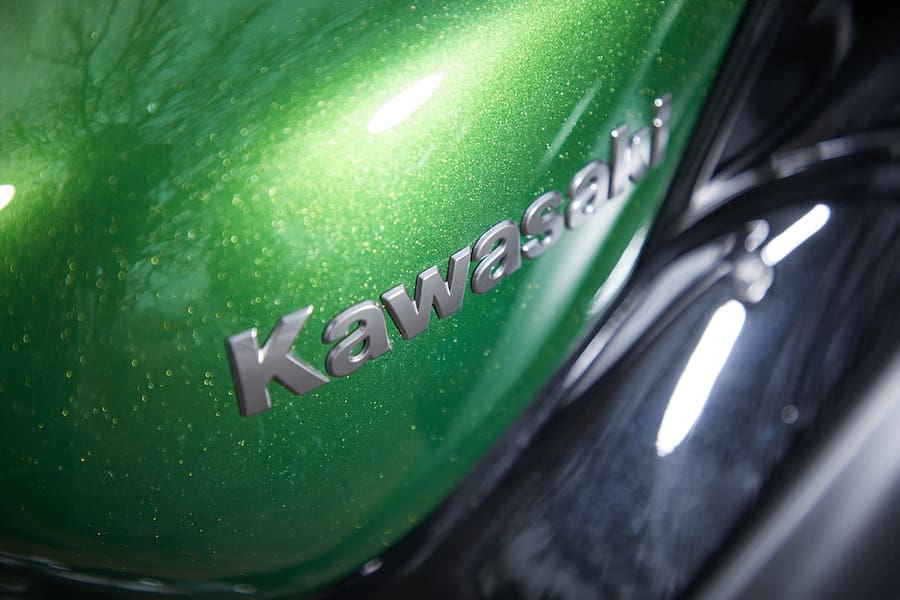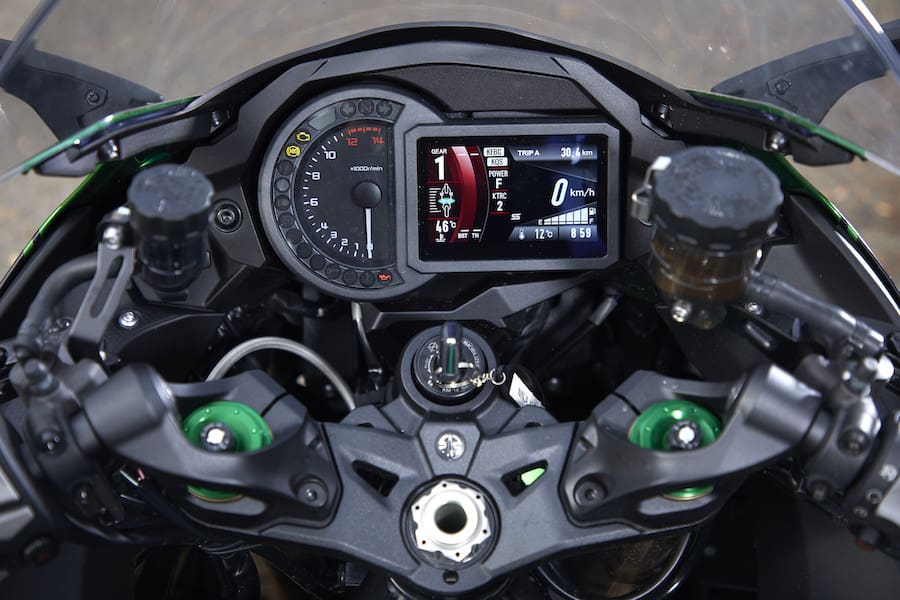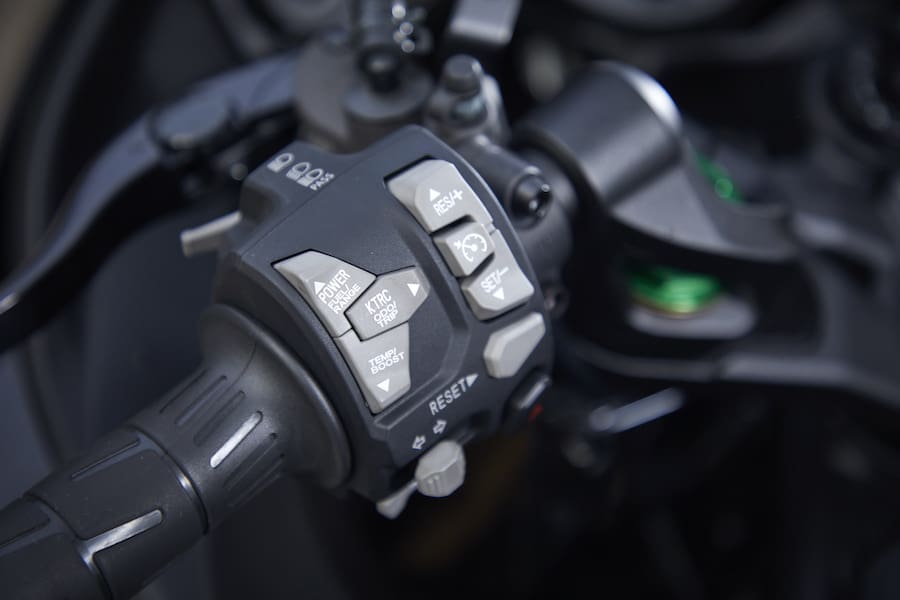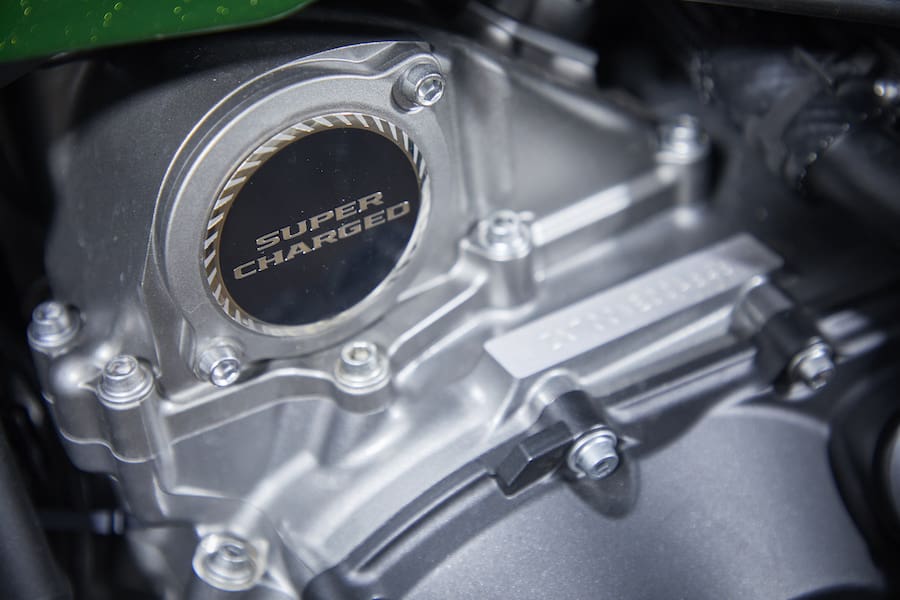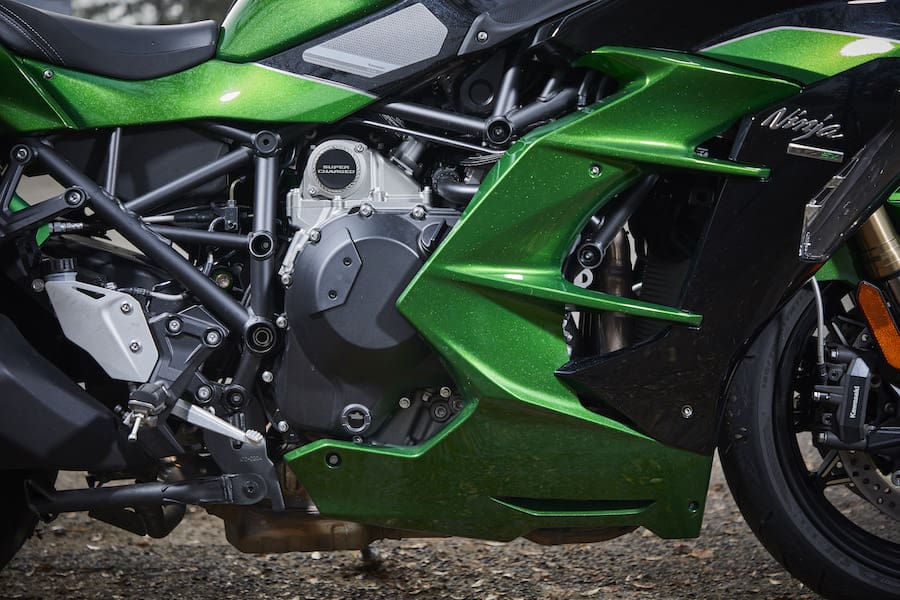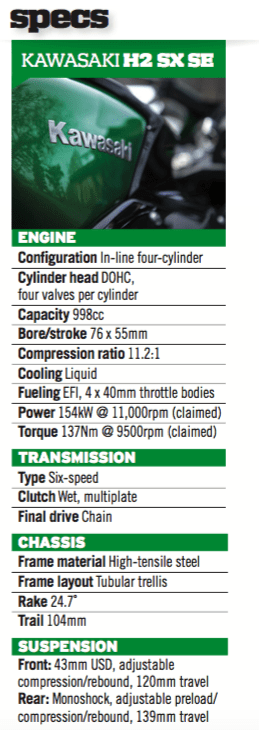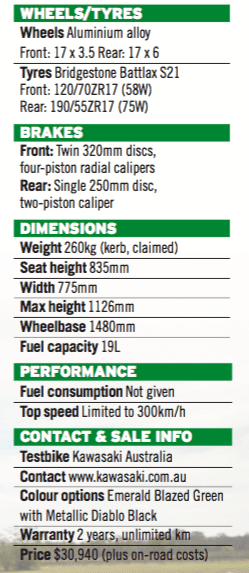I’ve spent a long time on the road in the last 10 years. For most of it, my wife Steph and I had a caravan in tow travelling across Europe.
Bouncing from track to track and balancing an intense schedule of racing, testing and staying fit, ready to do it all again the next week, I revelled in it for many years. It was an experience I will never regret.
However, a couple of years ago we decided to come home and catch up on the decade we left behind, biting off more than we could chew by starting multiple businesses and then chewing like hell! I’ve only been out of the hot seat for less than a year and, while I don’t miss some aspects of racing life, the love of two wheels hasn’t subsided, not even a bit.
For a major part of my career in Europe I was a test rider for Dunlop. I spent days on end lapping test tracks, which not only gave me ‘monkey butt’ but also a fascination for the technical side of what makes a motorcycle or product tick.

So touring the New South Wales Hunter Region on a Kawasaki H2 SX SE wasn’t that different (except for the monkey butt, of course) and my fascination meant I had a lot of questions for what is the world’s first production supercharged sports-tourer.
This time, instead of a caravan in tow, I had the wife on the back, and the first question was why the engine, nestled between a pair of aerodynamic panniers and below a pair of cruise-control-equipped ’bars, needed to be supercharged?
Before the ride I did a little light reading into Kawasaki’s history. What has always impressed me with its pedigree is the fact that building class-leading motorcycles isn’t the only thing the company does. A quick Google of Kawasaki Heavy Industries will reveal the extent of its knowledge and ability isn’t restricted to two wheels. That’s why I have no doubts that producing a supercharged 1000cc sportsbike a few years back and now re-engineering the bike to feature as a sports-tourer is well within their realm. In any case, I was about to find out.
Before I could even get a feel for what the soul of this bike had to offer, we spent an hour navigating Sydney’s peak-hour traffic, which believe it or not I had hoped for. The H2 SX features slimline panniers, so lane splitting is a breeze. We’d been in bumper-to-bumper traffic and taking mostly wrong turns for quite some time when Steph cracked her visor and asked, “Have you put your feet down yet?”
As much as I would like to put it down to my superior clutch control and low-speed balance, I have to admit the low-speed manoeuvrability of the H2 SX is impeccable – impressive for a 260kg machine – and one of its main contributors is its generous 30° of steering lock. The engineers also employed tactics such as tilting the engine 2° forward to lower the centre of gravity, which contributes to its great low-speed manners.
As the trend of this completely redesigned motorcycle has shown, you see lots of changes when lined up next to the H2. The frame certainly doesn’t go unnoticed; it can now cope with a 195kg payload, as opposed to the 105kg of the H2 (a necessity for a touring bike with a potential passenger on the back and panniers loaded to the brim).
The SX isn’t light by any stretch, especially when compared to the ZX-10R for example at 206kg. However, had I not read the specs I wouldn’t have known how big the difference is. Kawasaki has managed to balance and integrate the Ninja’s waistline very well. This is also assisted by a low seat height of 835mm, allowing a rider of my height to be completely flat-footed and knees bent at a standstill, and making it comfortable and easy to manage when my passenger was climbing on.
After a short highway interval where I managed to quickly work out the self-explanatory cruise control functions, the scenic route was upon us and my throttle hand was getting itchy! I actually had reservations at this point because bikes that go slow well don’t usually go fast in a particularly confidence-inspiring manner.
I have spent a big chunk of my career aboard a ZX-10R, and I must admit the H2 SX has been built with the essence of the excellent handling of the firm’s flagship superbike. This became evident through the winding roads of northern Sydney, the perfect testing ground for the H2 SX.
Its rigid trellis frame came into play and I was given a strong level of feedback from the front end, even if the chassis geometry and suspension set-up was a little steep for my liking. The shock was firm yet not bone-jarring, which many of the more track-oriented bikes get carried away with. Nevertheless, the words al dente came to mind.
The H2 SX doesn’t feature electronically adjustable suspension and, while this can be a great feature, it’s not something I would deem as lacking on this bike. However, we all know suspension can be adjusted and it’s not as dark an art as commonly perceived, so I pulled out a screwdriver and made a few changes that the chassis responded exceptionally to. You can’t expect a manufacturer to have one setting for every rider, so the important thing here is that the response from the fork and shock was precise and easily tuned.
After an extraordinary effort from Steph, I dropped her off for a coffee and decided to back-track alone for a solo fling with my new crush (just don’t tell the wife). And it was at this moment I stopped to actually take in what I was riding.
The H2 SX is a truly unique-looking beauty, and at first glance it looks quite futuristic and sleek, clearly taking after the flagship H2’s styling. And when you look at the way the panniers and revised/wider windscreen take into account the aggressive aero dynamic shape, the interwoven cross-sections of the trellis frame, and finally the depth of the green metallic hues – it looks good!
But let’s cut to the chase and answer that question you’ve probably been waiting to find the answer to… and I feel qualified to comment here because I have been lucky enough to ride some ridiculously fast motorcycles in my career. So, yes, it’s fast. And, yes, the acceleration is nothing short of exceptional! It’s an engineering feat.
We all know Kawasaki paved the production supercharged road with the H2, but this is a different beast – the peak power is reduced and torque is optimised, the delivery is completely predictable, and as linear as I could ever ask for.
A huge part of what makes this bike feel so good is the torque it produces from such low rpm. Those who have ridden a 1000cc superbike will know that incredible feeling of power once an engine reaches the sweet spot in the rev range. Well, this engine not only makes that power but the lead up to it is just as impressive. In fact, it is probably the closest thing you’ll ever get to making a jump into hyperspace… only with panniers on.
In fact, the H2 SX quickly transformed from a touring bike into a sportsbike, with a reconfigured engine mode and a few clicks of the suspension – coupled with removing the panniers. This is achieved easily via the concealed mounting points with just a turn of a key and the flip of a latch to jettison the cargo. Removing the panniers shed a considerable amount of weight in the form of a hairdryer, multiple pairs of high heels and 18 different outfit combos – as opposed to my four pairs of jocks and socks.
Luggage capacity was something I was a little sceptical about, knowing the SX’s hyperbike origins, but each pannier has a 28-litre capacity and 5kg weight limit, enough to squeeze plenty in for a few nights away. Importantly, each side can also hold a full-face helmet.
So, we’ve got untold power and predictability, but do we have usability?
Kawasaki has come a long way with rider aids in recent years. About a decade ago I saw a big jump forward in electronics in racing circles, and this has filtered down to what the customer can now buy from their local dealer.
The H2 SX features Kawasaki’s Corner Management Function (KCMF), which is responsible for a lot of the control functions available on this model. All are manageable via the sharp-resolution TFT display and can be changed on the left handlebar while on the go. The command console was easy to operate and needed no reference to the instruction manual.
It’s customisable, too, allowing you to change the dash colour and how the information is displayed.
You can view boost, throttle input and lean angle to name a few, along with the usual ambient temp, gear selection and fuel. The dash also adjusts for brightness automatically, which was fantastic at night, especially given the clarity and visibility of the display.
In Sport mode, the dash displays a visual representation of the brake and acceleration performance. I’m not sure it’s necessary to be looking at acceleration and braking forces, but it’s there should you be interested. I was very pleased to see an analogue tacho, which was incredibly responsive to the throttle.
The H2 SX was never designed to be a racebike, so I wouldn’t make a habit of riding to the limits of the traction control on the street. What I would expect first and foremost is a system that allows the power to be delivered safely and without a sudden peak to break traction, something the Kawasaki engineers have done a superb job of. Hard throttle openings for spirited riding weren’t an issue either, and I suspect that being supercharged as opposed to turbocharged (see sidebar) allows for a much more controllable power curve.
The two particular standouts in the electronics are the wheelie control and the ABS. I have always enjoyed testing and developing electronics, something that was a big focus for me over the years, and ABS is something I’ve especially witnessed forge ahead in leaps and bounds. I’ve had some terrible experiences with failed development ABS systems in the past, once eating the tarmac at 279km/h due to a technical error. But that aside, I’m a massive fan of modern systems and what they offer. Wet-weather riding is something I especially encourage the use of ABS for. The systems can react to changes in wheel speed much quicker than most riders, and the H2 SX’s offering is excellent. I swung off that brake lever to apply as much pressure to the brake as I could muster – something along the lines of Monza’s Turn 1 to give you an idea – and the system allowed an exceptional braking force with minimal compensation from the ABS brain. In fact, it even increased and decreased its interaction with the lever over bumps and when the weight was transferred to and from the front wheel. It’s clever and effective and gets the tick of approval from me. Just don’t get too carried away with a passenger on the back – Steph nearly ended up like a bug splatter on the back of my helmet!

It’s inevitable that a 200hp+ motorcycle might occasionally lift the front wheel, but a good electronics package will ensure power delivery is linear and controlled, omitting any lightswitch-style behaviour. So many wheelie-control systems aggressively engage a bike’s traction-control system when it senses differences in front and rear wheel speeds. This ultimately triggers the ECU to immediately cut the power and, while it works, it’s a crude and rather unrefined way of achieving an outcome. The H2 SX system, however, caught me by surprise because the wheelie-control system performed more like something from a top-level superbike. Naturally, I felt the need to test this system to its utmost ability, so the bike copped several hard launches reminiscent of a dash to the first corner from a front-row qualifying position. The reduction in power once the front wheel came off the ground was smooth and predictable, as the ECU controlled the delivery of torque to the rear wheel effortlessly. I tested this system on each of the bike’s power levels and couldn’t fault it. The Low setting offers a significant reduction, down to 50 per cent of full power, Medium gives 75 per cent and Full, obviously, unleashes all of what’s on tap.
Last on my list of welcome additions is the quickshifter. Anyone who says they don’t like quickshifters hasn’t used a good one. The H2 SX comes equipped with this modern marvel and, while this particular system struggles slightly with harsh gear-changes at low rpm, above 4000rpm I looked forward to every press of the lever. Another point worth noting is that using a little clutch for lower rpm changes smoothes out the process, though it does override the automatic downshift blips.
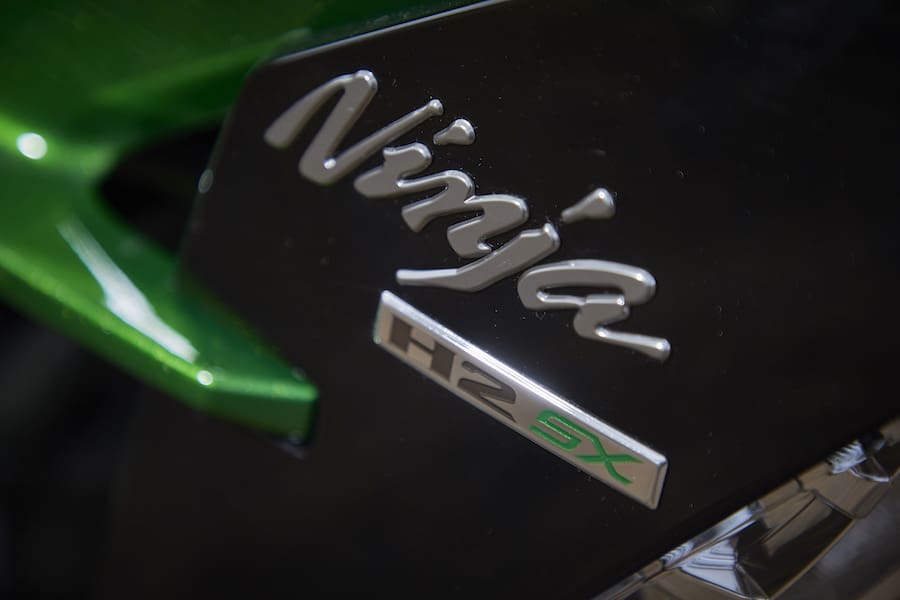
It’s no surprise that bikes these days are accelerating quicker with each new year, but more importantly they are safer to control and easier to ride. That’s a big one, as ease of riding keeps the rider alert and not focused on having to compensate for a particular characteristic of the bike. Kawasaki has done a fantastic job of this and has set a pretty high bar with its electronics package.
Adding to the list of tech is a corner-lighting system. To clarify, it has multiple lights integrated into each side of the forward fairing that activate based on the bike’s lean angle. The main LED headlight is bright and illuminates the road well, though the high beam could use a few more lumens for a touring bike, especially on particularly dark kangaroo-lined country roads. The corner-lighting system was complementary to the primary headlight and it worked exactly as described.

Let’s face it, for a sports-tourer, the H2 SX has a lot of bases covered. With the plethora of aids and features on offer, riding it is a pleasure – whether as a sportsbike or a tourer. Also, when we get down to the bare bones of a long-distance motorcycle ride, it is ultimately comfort and ease of use that will win votes. It’s not an armchair, but I rode some big kilometres without any major comfort challenges.
A bike in this category is always going to have more aggressive ergonomics than a pure tourer, and the only complaint I had was the footrest-to-seat positioning, which was a little cramped. A slightly taller seat height would have helped but in turn would put more weight on my hands. Everyone’s different, and it’s a delicate balance.
From my discussions with Kawasaki, one of the firm’s main goals with the H2 SX was to bring that supercharged sensation to the sports-tourer category and build something to put a smile on a rider’s face. What is on offer with this bike is brilliant and I hope Kawasaki features this engine technology – or variants of it – in the future and on other platforms.
Pricing for the H2 SX starts at $30,940 (plus on-roads) and, while I agree it is a lot of hard-earned, you have to weigh up what you’re getting. I asked myself what I wanted in a sports-tourer and it ticked almost every one of my boxes.
In addition, you get something that no one else offers, it is sure to impress the hell out of your mates in the twisties, and is perfect for your annual MotoGP pilgrimage to Phillip Island.
Bravo Kawasaki, you succeeded.

TEST Gareth Jones
PHOTOGRAPHY Josh Evans
